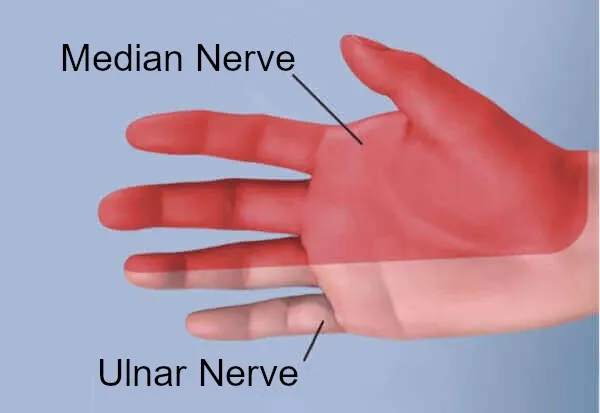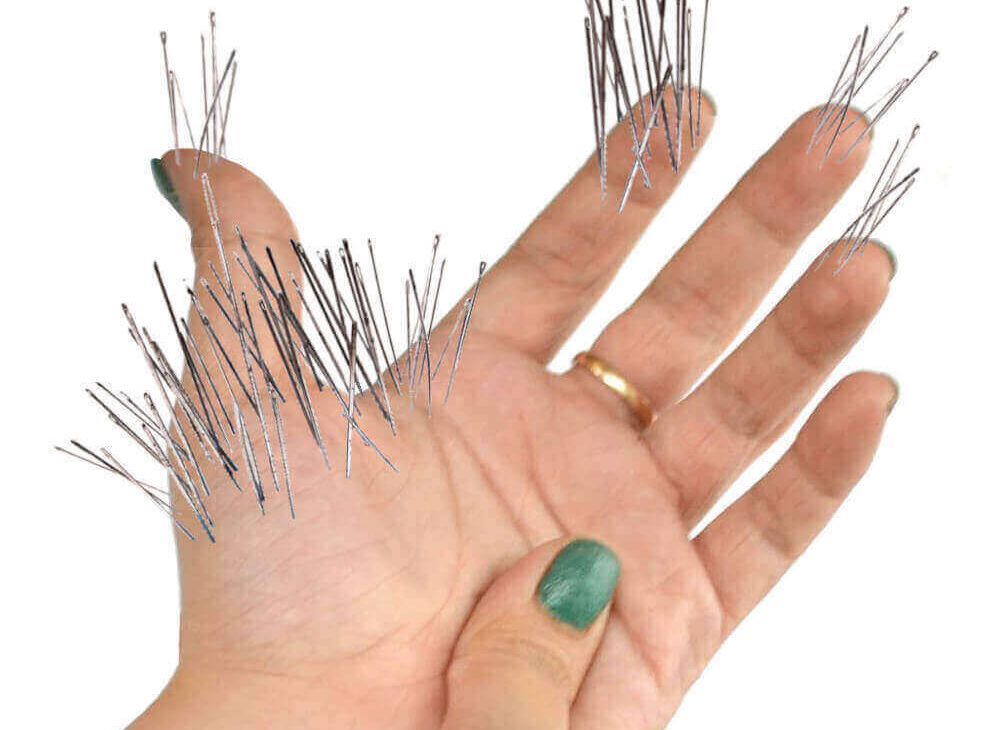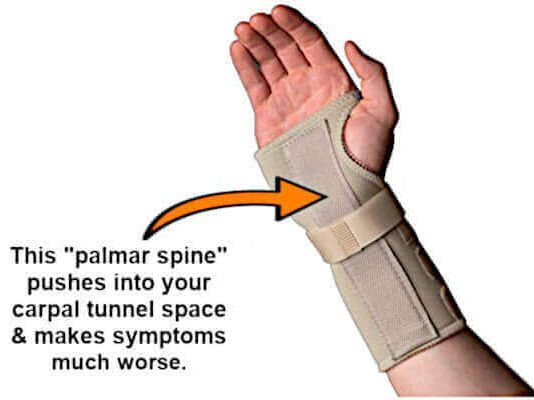Having Numb Hands While Sleeping
Table of Contents
- Overview
- Signs you have carpal tunnel syndrome
- Carpal tunnel sign #1 - Numbness
- Carpal tunnel sign #2 - Pain
- Carpal tunnel sign #3 - Tingling
- Carpal tunnel sign #4 - Itching or burning
- Carpal tunnel sign #5 - Puffy or swollen feeling
- Carpal tunnel sign #6 - Weakness
- Carpal tunnel sign #7 - Clumsiness
- Why do these symptoms happen?
- Who gets carpal tunnel syndrome?
- High risk conditions
- High risk occupations
- 4 Steps to eliminate symptoms without surgery
- Remedy 1: Brace your hand at night
- Remedy 2: Rest your hand frequently
- Remedy 3: Exercise your fingers & hand
- Step 4: Massage your wrist & forearm
- Summary
- FAQs
- About
Overview
Having numb hands while sleeping is a very common problem. If it only happens occasionally, it's usually nothing to worry about. More than likely, you probably only need to adjust your
sleeping position. If this is the case, try sleeping on the opposite of your preferred side. Changing your pillow or mattress is also helpful.
However, if you have numbness in your hands while sleeping on a
regular basis,
and it's
constantly waking you up,
then it could be more serious. By far, the most common problem causing this is
carpal tunnel syndrome. If fact, having numb hands while sleeping is usually the FIRST sign of this disorder. Unfortunately, simple sleeping adjustments are not enough to eliminate carpal tunnel.
Most people get carpal tunnel as a result of their occupation. If yours involves a lot of
strenuous hand activity (like rapid and repetitive finger movement) then you're already at high risk for getting this disorder. But don't panic; there are several tested and approved nonsurgical remedies to eliminate carpal tunnel syndrome.
Signs you have carpal tunnel syndrome
We already established that having numb hands while sleeping is one of the first signs of carpal tunnel syndrome. But there also are several other signs, as listed below. It's not necessary to have these other symptoms, but most people get more than one.
It's also important to establish WHERE these symptoms occur. This diagram shows where ALL carpal tunnel symptoms appear. The symptoms usually are
confined to these areas. Sometimes symptoms radiate out from these areas as well.
Carpal tunnel sign #1 - Numbness
Carpal tunnel sign #2 - Pain
Carpal tunnel sign #3 - Tingling
Carpal tunnel sign #4 - Itching or burning
Carpal tunnel sign #5 - Puffy or swollen feeling
Carpal tunnel sign #6 - Weakness
Carpal tunnel sign #7 - Clumsiness
Why do these symptoms happen?
Having painful or numb hands while sleeping is easily explained if you have carpal tunnel syndrome. To do so, you must understand that the problem with carpal tunnel starts deep inside your wrist joint.
The main nerve to your hand (median nerve) passes through a passageway deep inside your wrist joint. It travels through the passageway alongside your flexor tendons (which are responsible for curling your fingers).
When some people stress their fingers and hand, these tendons inflame and swell. That swelling pushes against the adjacent median nerve.
The result is that the nerve is crushed. And that's what gives you all of the symptoms of carpal tunnel syndrome.
However, you can get a crushed median nerve (and hence carpal tunnel syndrome) in other ways. Any condition which causes swelling (i.e., pregnancy, a broken wrist, lupus) can lead to carpal tunnel syndrome.
Who gets carpal tunnel syndrome?
High risk conditions
Anybody can get carpal tunnel syndrome. However, there are certain risk factors that make the probability of getting this disorder much higher. These are:
High risk occupations
There are specific occupations commonly associated with getting carpal tunnel syndrome. That's because each of them requires either repetitive or forceful finger and hand activity. These occupations are:
4 Steps to eliminate symptoms without surgery
No doubt you've heard about
carpal tunnel surgery to relieve symptoms. You might even know somebody who had this hand operation (like millions of people already).
But did you know that the
American Academy of Orthopedic Surgeons (AAOS) advises doctors to recommend surgery as the very
LAST option for carpal tunnel? The reason is because surgery has a success rate of
approximately 50%. Most of the other half (or the "successful" patients) see symptoms return within 2 years.
Moreover, there are multiple non-surgical options available. These have a high success rate of
permanently
eliminating symptoms.
Each non-surgical remedy listed below works to reduce the
source of the tendon swelling. By doing so, the tendons will not crush the median nerve again.
When you combine these remedies together, they have a 97% success rate when performed for a minimum of 4 weeks.
Step 1: Brace your hand at night
Step 2: Rest your hand frequently
Step 3: Exercise your fingers & hand
Step 4: Massage your wrist & forearm
Summary
Having numb hands while sleeping can be due to a poor seeping position. In that case, adjusting your sleeping position should solve the problem. But having numb hands while sleeping is also a main sign of carpal tunnel syndrome. If this is the problem, you don't have to allow this disorder to take over your life. Taking the proper steps now to resolve the problem will prevent misery later on. Follow 4 simple steps to stop carpal tunnel in its tracks.
FAQs
- I adjusted my sleeping position and the numbness reduced a lot - but it's not gone. What can it be from?
It's possible you have carpal tunnel syndrome.
Check yourself here.
- Does the CarpalRx do the exact same massage as a therapist?
Yes, the CarpalRx reproduces the motions of kneading the skin over your wrist and forearm area. This is identical to the myofascial release massage a therapist gives you.
- Can I use multiple remedies at once?
Yes, in fact, it's preferable. Using rest and avoidance, night bracing, stretching exercises, and myofascial release massage simultaneously and on a regular basis will make symptoms resolve faster and more completely.
About
















